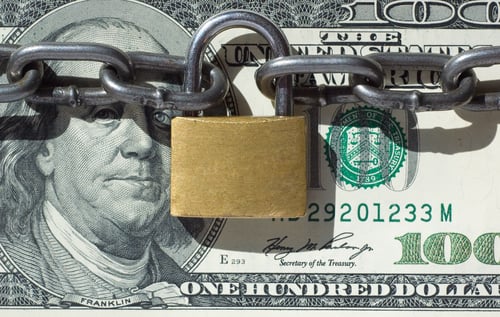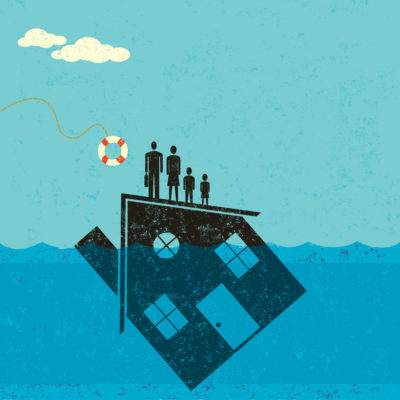
The COVID pandemic and resulting eviction moratoriums changed the dynamic between many tenants and landlords. While restrictions ramped up, the government stepped in to provide emergency relief to those facing financial hardship due to COVID. Both the CARES Act and American Rescue Plan Act promised crucial funding, but so far, only a tiny fraction has made it to those in need. Local jurisdictions were tasked with equitable distribution of funds to help prevent vulnerable tenants from almost certain eviction. Now, moratoriums are expired, and uncertainty abounds. So, for those still trying to get eviction assistance, what’s the hold-up? Join us below to examine how to apply for eviction assistance and what states need to do to meet the need better.
How to Get Eviction Assistance in Maryland
Tenants that have lost income due to the COVID pandemic may be eligible for emergency eviction assistance and rent relief through various federal and state programs. Currently, the state of Maryland utilizes two forms of distribution for federal relief funding –
- Disbursement direct to local jurisdictions through the Maryland Eviction Partnership Program, which supports local eviction assistance programs
- Through property management on behalf of tenants receiving federal or state financing through the Assisted Housing Relief Program.
 What is the Process to Receive Emergency Rent Relief?
What is the Process to Receive Emergency Rent Relief?
It is essential to understand that rent relief is not automatic. In fact, tenants and landlords must work together to complete the application and verification process smoothly. Landlords play a crucial role in helping tenants discover what aid may be available, and states encourage open communication between parties. That said, let’s review the necessary steps below.
- Confirm Eligibility
- Gather Required Documents
- Complete the Application Form
Who is Eligible for Relief Funding and Eviction Assistance?
To qualify for eviction assistance, tenants must show evidence of pandemic-related financial hardship as well as other criteria. While qualifications may vary slightly from location to location, Marylanders must typically meet the following –
- Resident in the county the tenant is applying for
- Must need the assistance for the tenant’s current residence
- Tenants are at risk of losing their rental home due to COVID related financial hardship or income loss or qualify for unemployment
- Income is at or below 80% of the area median income
- Per federal restrictions, rental households with incomes less than 50 percent of AMI. In addition, homes with one or more tenants that have been unemployed for at least 90 days before the household’s application for assistance must be prioritized.
Area Income Limits for Baltimore County Residents
Per the qualifications above, eviction assistance applicants must have an annual gross income at or below the following levels –
- One person household – $55,950
- Two person household – $63,950
- Three person household – $71,950
- Four-person household – $79,900
- Five person household – $86,300
Documents Required for Eviction Assistance
To ensure an efficient application process, parties should gather all required documentation. That said, tenants must provide the following –
- Driver’s License or Government-Issued ID
- Copy of the Current Rental Agreement
- Proof of direct or indirect COVID related financial loss
- Monthly income documents
As part of the application process, landlords may need to provide documents as well. This may include, but is not limited to, a tenant ledger with unpaid balance and a completed W-9 form.
How is Maryland Handling Eviction Assistance?
States faced an uphill challenge when the federal government tasked them with distributing hundreds of millions to renters facing financial hardship. Early in the pandemic, Maryland was allotted over $400 million in federal funding towards its Emergency Rental Assistance Program. However, so far, Maryland has been slow to establish the streamlined and efficient processes necessary to get relief into the hands of tenants and landlords. In some cases, tenants who applied for relief are left waiting weeks for a decision.

As of late July, around 10,000 tenants received a combined $59 million in emergency eviction assistance, and another $30 million was in process. However, some jurisdictions are moving much slower than others. For example, Baltimore County reports only around $800,000 in aid going to families in need in the same timeframe.
However, this is where the numbers get confusing. According to Baltimore County officials, they have provided millions more in rental relief and eviction assistance. That said, they attest that funding has come from other sources besides the Emergency Rental Assistance Program. Of the nearly $50 million allocated to Baltimore County, $35 million is distributed by contracted nonprofits. However, landlords and tenants have grown frustrated by application red tape and crippling processing times.
How Will it Get Better?
Eviction moratoriums are over, and at-risk tenants have a reason to worry. That said, the federal government is weighing in on the state’s reported slow response. In doing so, they aim to ramp up pressure to get funds distributed.
Based on funding rules, as of September 30th, states and local jurisdictions were to distribute at least 65% of allocated ERAP funds. However, if they do not meet this threshold, the potential risk is having to return unused funds to be reallocated by the federal government. Maryland is on pace to meet the 65% threshold at the state level by the end of October, but admittedly, counties must do better. Several issues plagued this distribution process from the start, which includes –
- Lack of Infrastructure – States and counties had to develop processes and plans on the fly to get some semblance of order to the chaos quickly. However, as processes were put in place and found to be lacking, making it better has been slow.
- Changing Guidelines – As if there was not enough confusion, changing guidelines to who was eligible also impacted processing times.
- Prioritization – One goal of the program was to identify and prioritize the most vulnerable cases to ensure swift eviction assistance. While great in theory, sifting through the onslaught of applications and self-reported income has proven to be a challenge for program partners and administrators. Thus, taking far longer than anticipated or wanted.
- Landlord Hesitance – Not every landlord is on board with eviction assistance funding. For example, some property owners do not want to forgo their right to pursue eviction on a non-paying tenant.
The Critical Future of Maryland Eviction Assistance
No one would likely disagree that eviction assistance funds need to move faster into the hands of those in need. However, how to do just that is up for debate. But, with pressure from all sides, county programs must quickly adjust and staff up to meet the demand and government deadlines. The trouble is each jurisdiction faces some unique challenges, and a blanket “one size fits all” program will not be successful. Instead, emergency relief programs must focus on the following –

- Improving the Narrative – Outreach and understanding continue to be an issue. It is vital for programs to better connect with tenants and landlords to advise what type of relief is available and how to get it. Moreover, outreach should extend across all platforms, including state or local websites and eviction summons.
- Evaluate the Process – As demand increased, many programs across the state did not keep up. Fundamentally, that needs to change – and fast! Programs must make an effort to streamline the application process and documentation required to qualify for aid.
- Foster Connections – Identifying who is the most in need of eviction assistance is a critical aspect of the program’s success. Organizations tasked with funding distribution should work with courts to developing strategies that identify and link at-risk tenants with emergency aid. Additionally, emergency aid representatives should maintain a presence in court to further facilitate program application and outreach to landlords and tenants in need.
- Increase Staffing – Administering emergency aid is a complex and overwhelming task that requires many people to succeed. Therefore, agencies should expand staff allocations and partnerships with smaller agencies to process and distribute funding more effectively. Moreover, added staff can prioritize and fast-track applications for tenants in immediate need of eviction assistance.
Where Can Marylanders Find Additional Assistance?
Moving forward, landlords and tenants must be open to working together towards a common goal – keeping tenants in their homes and making landlords financially whole. According to officials, cooperation between all parties is critical. As a landlord or a tenant in need, the state has assembled several resources to help find and apply for eviction assistance, emergency aid, or obtain legal help. Check out some of the following contacts below or head over to Maryland’s Emergency Rental Assistance website for more information.
The Maryland Emergency Rental Assistance Call Center
Helping Marylanders connect with available assistance programs in their area.
Phone: (877) 546-5595
Baltimore County Department of Housing and Community Development (DHCD)
For Baltimore County voucher holders needing to update income or inquire about recalculation or additional assistance
Phone: (410) 887-2766
In some cases, local programs and organizations may offer help to families in need outside of the federal or state-mandated programs. Check out local emergency aid listings through dialing 211 or checking out their website.
Attention Landlords – We’re on Your Team
As a landlord, the pandemic has likely raised many concerns and questions. Can I financially survive? How do I handle a non-paying tenant? What do the changing regulations mean for me? Do I want to continue renting out my property, or is now the time to sell? All of which are valid and understandable concerns.
If you have never considered professional property management, now is a perfect time. At Bay Property Management Group, we understand the unique challenges landlords face, whether in the wake of the pandemic or otherwise. As the area’s leading third-party management firm, we aim to bridge the gap between tenant needs and landlord interests. Thus, striving to achieve an amicable outcome that protects your investment. So, while the government has taken considerable steps to protect tenants’ rights, let Bay Property Management Group help protect your interest as a landlord. To learn more about our full-service approach to property management, give us a call today or visit us online for a free, no-obligation rental home analysis.

 What is the Process to Receive Emergency Rent Relief?
What is the Process to Receive Emergency Rent Relief?